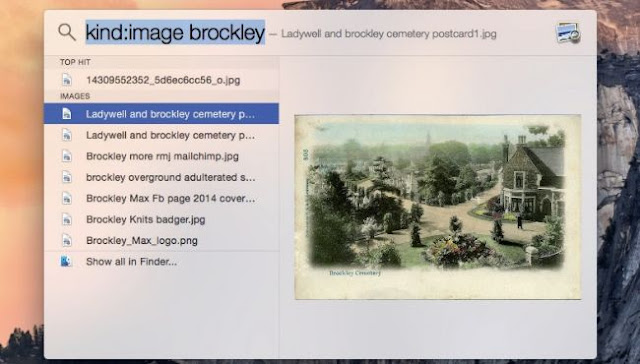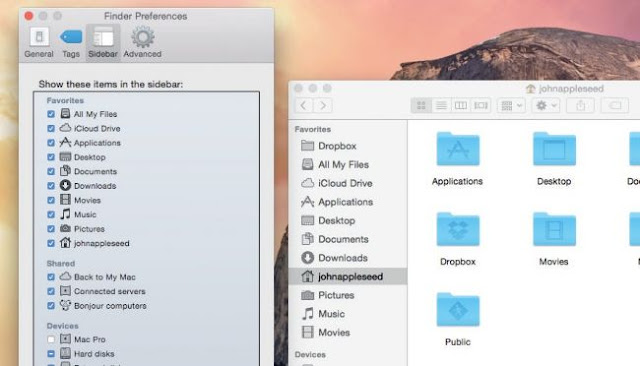The old days of remembering where you stored every created file are long gone. For most of us this is a good thing, as we rarely remembered where everything was and wasted time searching for files.
ADVERTISEMENT
Modern versions of OS X augment files in the Finder with a huge amount of metadata – additional information that describes a file's data. A photo will have a name and a file type, but also all kinds of other information: when it was taken, what camera was used, where it was photographed, the camera's aperture setting, dimensions, colour space, and so on.
All this information can be used to find files, no matter where they are located, using Spotlight. So if you want to get better at finding files, you should learn to spot the metadata attached to each file.
Select a file and choose File > Get Info. Look under the More Info section of the Info window to see what metadata is attached to that file. This is the sort of thing you can search for in Spotlight.
If you want to view all the metadata for a file, open a Terminal window and type mdls followed by a space, then drag a file onto the window to add its path to the command and press Enter.

Spotlight can search for files in which metadata matches certain attributes, such as type and creation date
Yosemite emphasises Spotlight's ease of use in searching, assuming you would prefer to type what you're looking for into a search field, rather than locate it in a familiar folder.
So if you can't find a specific file, press Command + Spacebar to call up the Spotlight search bar and type the file or folder name or a word it contains.
Select a file in the results and hold down the Command key to view the path to where it's stored. Click a result with the Command key held to open a Finder window at its location.
If you're going to rely on Spotlight to find files, it's a good idea to start naming files intelligently so you can identify them in Spotlight. Try to include a description, project, version and even a date in the file's name.
Getting back Finder locations
ADVERTISEMENT
Sometimes you still end up digging around for files in Finder, though. Recent versions of OS X have changed a few things: new windows show the All My Files view by default, and a few of the pre-created folders in your home folder are no longer listed in the sidebar.
However, both of these things are customisable to help you reach what you need more quickly.

Yosemite emphasises Spotlight's ease of use in searching, assuming you would prefer to type what you're looking for into a search field, rather than locate it in a familiar folder.
So if you can't find a specific file, press Command + Spacebar to call up the Spotlight search bar and type the file or folder name or a word it contains.
Select a file in the results and hold down the Command key to view the path to where it's stored. Click a result with the Command key held to open a Finder window at its location.
If you're going to rely on Spotlight to find files, it's a good idea to start naming files intelligently so you can identify them in Spotlight. Try to include a description, project, version and even a date in the file's name.
Getting back Finder locations
ADVERTISEMENT
However, both of these things are customisable to help you reach what you need more quickly.

If you need to reinstate something in the sidebar you can do so by delving into Finder's Preferences where you get choose what items show up there
You can drag any folder into the Favorites group in the sidebar to make it reachable in an instant. Folders can be added to the Dock by dragging them into the area to the right of the dividing line, and the appearance of these shortcuts, called Stacks, can be customised by Ctrl-clicking them.
To change the folder that new Finder windows display, go to Finder > Preferences > General and set 'New Finder windows show' to any folder.
Files created in iOS apps are stored in your iCloud Drive, yet you don't have to open those files from within apps on a Mac, like you would in iOS.
Choose Go > iCloud Drive or select the iCloud Drive shortcut in a Finder window's sidebar to browse them.
However, be careful about moving around files that are still syncing to your Mac (indicated by a progress bar) as this can cause them to be lost.
Deleted files can be recovered in Settings > Advanced at icloud.com.
Secrets of Spotlight
Spotlight is pretty easy to use, and it's best to start off simple by just searching for the name of a file. Enter 'script' to find a file with that in its name or contents.
Entering 'script' should bring up the Script Editor app as the top result. If this isn't what you are looking for you could narrow down your search using Boolean operators: AND, OR and NOT. Enter 'script NOT editor' or prefix a word with a minus to omit items with that word from results.
ADVERTISEMENT
Typically, though, you'll want to narrow down your search using keywords. Enter 'script kind:document' to find all the documents with script in their name or text. You can narrow down searches using created and modified tags, such as created:2015, or created:10/5/14 to match a specific date.
Use the 'less than or equals' operator (<=) to find items created before a certain date, such as 'created:<=10/12/2014'.
You can drag any folder into the Favorites group in the sidebar to make it reachable in an instant. Folders can be added to the Dock by dragging them into the area to the right of the dividing line, and the appearance of these shortcuts, called Stacks, can be customised by Ctrl-clicking them.
To change the folder that new Finder windows display, go to Finder > Preferences > General and set 'New Finder windows show' to any folder.
Files created in iOS apps are stored in your iCloud Drive, yet you don't have to open those files from within apps on a Mac, like you would in iOS.
Choose Go > iCloud Drive or select the iCloud Drive shortcut in a Finder window's sidebar to browse them.
However, be careful about moving around files that are still syncing to your Mac (indicated by a progress bar) as this can cause them to be lost.
Deleted files can be recovered in Settings > Advanced at icloud.com.
Secrets of Spotlight
Spotlight is pretty easy to use, and it's best to start off simple by just searching for the name of a file. Enter 'script' to find a file with that in its name or contents.
Entering 'script' should bring up the Script Editor app as the top result. If this isn't what you are looking for you could narrow down your search using Boolean operators: AND, OR and NOT. Enter 'script NOT editor' or prefix a word with a minus to omit items with that word from results.
ADVERTISEMENT
Use the 'less than or equals' operator (<=) to find items created before a certain date, such as 'created:<=10/12/2014'.
There are many more keywords you can use to perform more focussed searches in Spotlight.
/www.techradar.com/


No comments:
Post a Comment